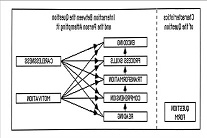Assessing Teachers’ Knowledge in Analysing Errors in Mathematical Word Problems of Ghanaian Primary School Pupils

Abstract:
References:
[1]National
Council of Teachers of Mathematics (2000). Principles
and standards for school mathematics. Reston, VA: NCTM.
[2]Springer,
T. A. (2007). Linear algebraic groups
(2nd). Boston: Birkhäuser.
[3]Gervasoni,
A., Hadden, T., & Turkenburg, K. (2007). Exploring the number knowledge of children
to inform the development of a professional learning plan for teachers in the Ballarat
diocese as a means of building community capacity. In J. Watson & K. Beswick
Gervasoni, A., Hadden, T., & Turkenburg, K. (Eds.), Mathematics: Essential research, essential practice (pp. 305-314). Hobart,
Australasia: MERGA Education Research Group.
[4]Ministry
of Education (2001). Mathematics syllabus
for primary schools. Accra: Ministry of Education, Ghana.
[5]West African
Examination Council (2008). Basic Education
Certificate Examination Chief Examiners Report. Accra: West African Examination
Council.
[6]Newman,
M. A. (1977). An analysis of sixth-grade pupils’ errors on written mathematical
tasks. Victorian Institute for Educational
Research Bulletin, 39, 31-43.
[7]Adler, J.,
& Ball, D. (2009). Mathematical knowledge for teaching. Retrieved on October
9, 2021, from http://tsg.icmell.org/tsg/show/30.
[8]Cross, D.
I. (2008). Creating optimal mathematics learning environments: Combining argumentation
and writing to enhance achievement. International
Journal of Science and Mathematics Education, 7(5), 905-930.
[9]Adler, J.,
& Davis, Z. (2006). Opening another black box: Researching mathematics for teaching
in mathematics teacher education. Journal
for Research in Mathematics Education, 37(4), 270-296.
[10]Berk, D.,
Taber, S. B., Gorowara, C. C., & Poetzl, C. (2009). Developing prospective elementary
teachers’ flexibility in the domain of proportional reasoning. Mathematical Thinking and Learning, 11, 113–135.
[11]Mueller,
M. F., & Maher, C. A. (2009). Convincing and justifying through reasoning. Mathematics Teaching in the Middle School, 15(2),
108-116.
[12]Clements,
M. A. (1980). Analyzing children’s errors on written mathematical tasks. Educational Studies in Mathematics, 11(1),
1-21.
[13]Mellin-Olsen,
S. (1987). The politics of mathematics education.
Dordrechl: Reidel.
[14]Casey, D.
P. (1978). Failing students: A strategy of error analysis. In P. Costello (Ed.),
Aspects of motivation (pp.295 -306). Melbourne:
Mathematical Association of Victoria.
[15]Newman,
M. A. (1983). Strategies for diagnosis and
remediation. Sydney: Harcourt, Brace Jovanovich.
[16]Lemos, R.
(2003). Matrix inequalities in statistical mechanics. Lin. Alg. Appl., 376, 265-273.
[17]Andoh-Kumi,
K. (2000). One policy, many needs. A paper presented at the Comparative and International
Education Society (CIES) 2000 Conference, San Antonio, USA 4-16 March 2000.
[18]Kaphesi,
E. (2001). Improving educational quality project: Effects of home language on pupils’
performance in mathematics: A focus ofleq/Malawi Project IEQ undertaken by: American
Institutes for Research in collaboration with The Academy for
Educational Development Center, Inc. Juárez and Associates, Inc. The University
of Pittsburgh.
[19]Polya, G.
(1973). How to solve it: A new aspect of mathematical
method. Princeton, NJ: Princeton University Press.
[20]GES-STME-JICA
(2004). Ghana Education Service-Science, Technology, and Mathematics Education-Japanese
International Corporation Agency Workshop for Teachers, Accra.
[21]Noraini,
I. (1999). Linguistic aspects of mathematical education: How precise do teachers
need to be? In M. A. Clemet (Ed), Cultural
and language aspects of Science, Mathematics, and technical education (pp. 280-289).
Brunei: University Brunei Darussalam.
[22]Shulman,
L. S. (1986). Those who understand: Knowledge growth in teaching. Educational Researcher, 15(2), 4-14.
[23]Spektor-Levy,
O., Eylon, B. S., & Scherz, Z. (2009). Teaching scientific communication skills
in science studies: Does it make a difference? International Journal of Science and Mathematics Education, 7(5), 108-116.

